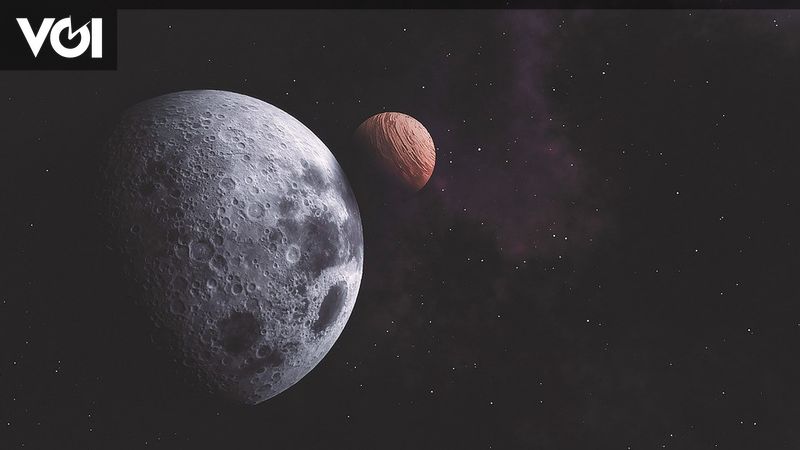JAKARTA – Using surface temperature data taken by the Lunar Reconnaissance Orbiter for more than a decade, the research team mapped the “cold trap” on the moon. This area is low enough temperature for the presence of solid carbon dioxide (CO2).
Ingredients such as dry ice can be found in supermarkets. This supply of CO2 could potentially be used to make rocket fuel, food, materials, and oxygen for lunar explorers.
“Cold traps have been the focus of recent lunar explanations because that’s where experts hope to find water,” said study lead author Norbert Schorghofer, a planetary scientist in Hawaii who works for Arizona’s Planetary Science Institute. MSN.
But no one has yet been able to verify if there is CO2 ice in any of these cold traps. But this research supports the idea that there are areas that are very shady and always cold on the Moon, so ice can survive there.
There is direct evidence that CO2 also exists on the moon. In 2009, NASA’s Lunar Crater Observation and Sensing Satellite (LCROSS) accidentally threw a piece of rocket debris into a lunar crater at high speed to create a clump of material that reached outer space. The probe then analyzes the blob and detects CO2 and water molecules.
This fact, paired with the new map of cold regions means, “this cold trap must actually contain CO2,” said Schorghofer. But the next step is the mission to go out and verify it by exploration.
Above a certain temperature, water and CO2 ice in space will sublimate, changing the direct phase from solid to gas. In some of these cold traps, the sublimation of CO2 ice slows to a crawl—a few centimeters of depth is lost every billion years at most. Which means, most importantly, it must accumulate on the moon because the moon collects ice faster than it removes it.
There are about 6,000 square miles of water ice traps in the Moon’s south polar region. But CO2 requires lower temperatures to stay frozen, and those colder areas are harder to find. Schorghofer’s team found 79 square miles of ice traps where dense CO2 might exist, in dark craters around the south pole, as they report in the journal Geophysical Research Letters.
They also learned something that sounded very clear: whatever ice there is will melt faster in summer, when the moon warms up a bit.
“These areas, which are some of the coldest places on the moon, represent large areas where CO2 can stabilize, given how volatile the material is,” said Paul Hayne, a planetary scientist at the University of Colorado at Boulder who is particularly interested in polar ice. months and was not part of the study.
The trap lies in “shadow within the shadow” and hasn’t seen sunlight in at least a billion years, Hayne said. Scientists know this area existed before, but not how cold it was or how large it was.
While the study provides a “treasure map” of cold traps, obtaining and extracting CO2 is a different story, according to Hayne.
“Future lunar landers and astronaut missions will likely encounter many cold traps that are smaller or too small to be seen from orbit,” Hayne said. “Carbon is rarely found on the moon, but it is a very useful element. Methane, the fuel of choice for SpaceX’s recent rockets, can be made from CO2.”
Exactly where the CO2 on the moon comes from is uncertain. “Most likely deposited by comets that are rich in various types of ice,” said Schorghofer. He added that the impact of carbon-rich meteors on the lunar surface could create CO2 through chemical reactions as well.
The moon can also “give gas”, allowing CO2 trapped deep underground to slowly rise to the surface.
“There was so little carbon on the moon that the search could be like searching for oil on earth in the early days,” said Schorghofer. At that time, people were looking for concentrated hydrocarbons. “Now we are looking for concentrated carbon,” said Schorghofer.
– .


